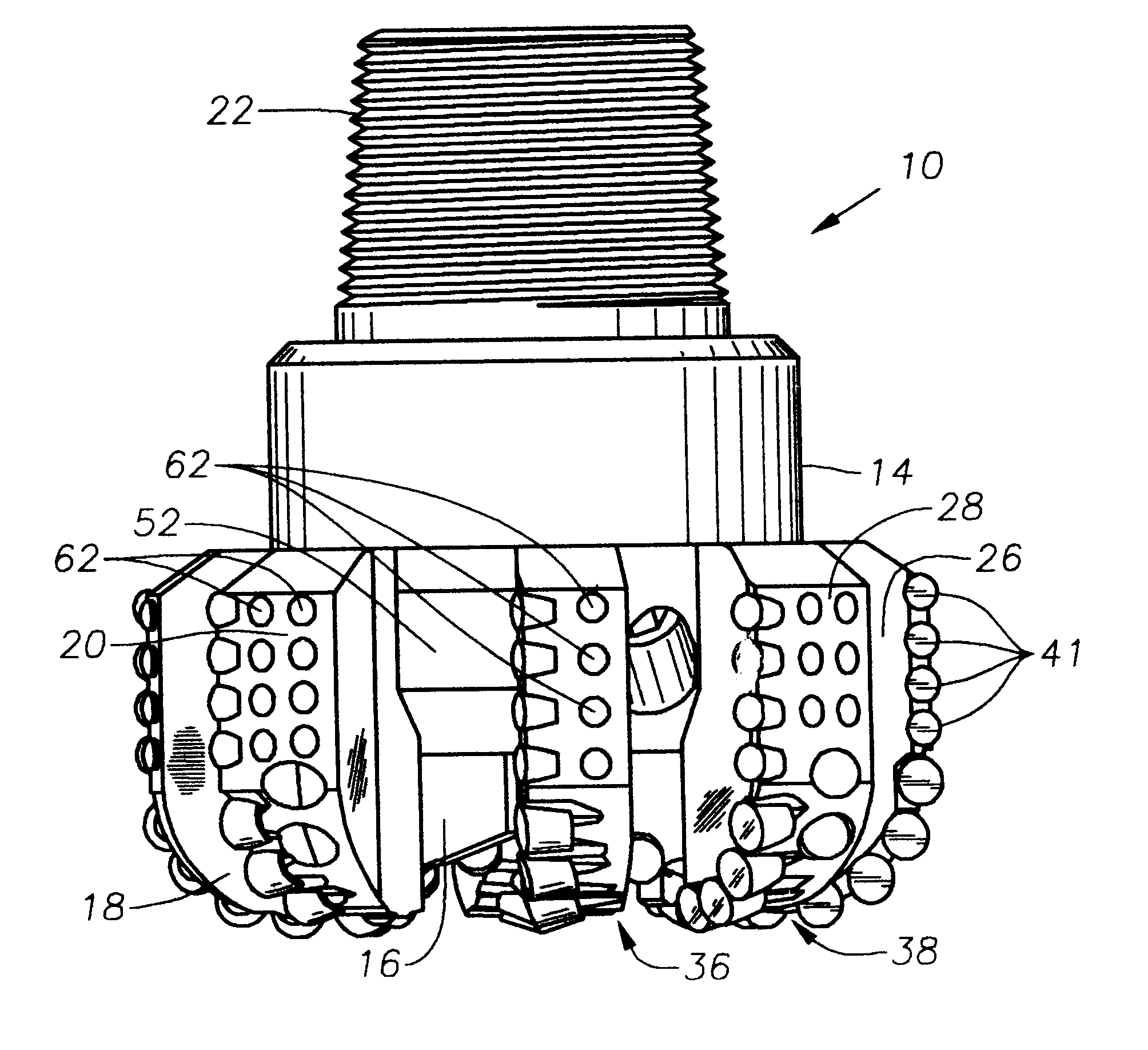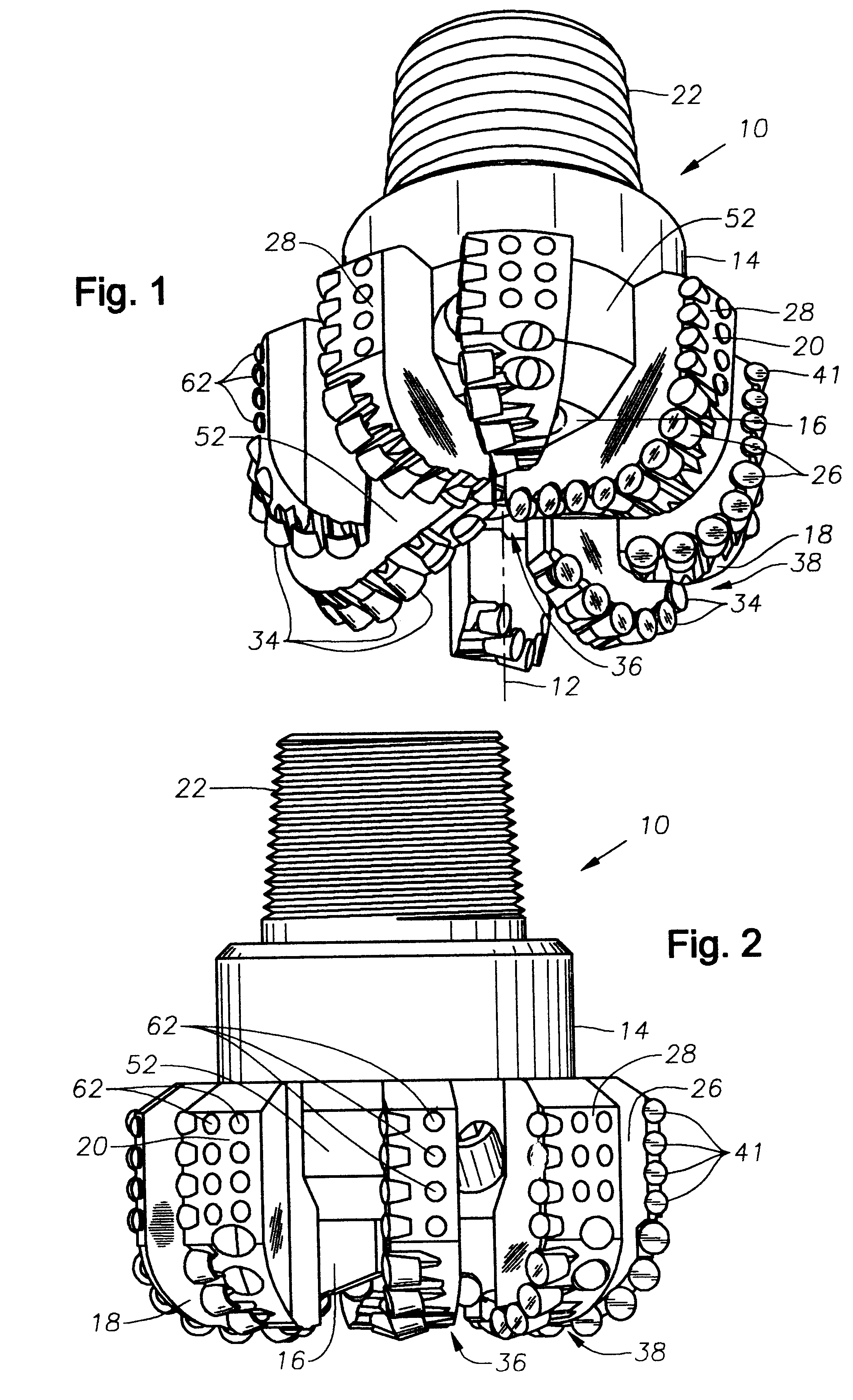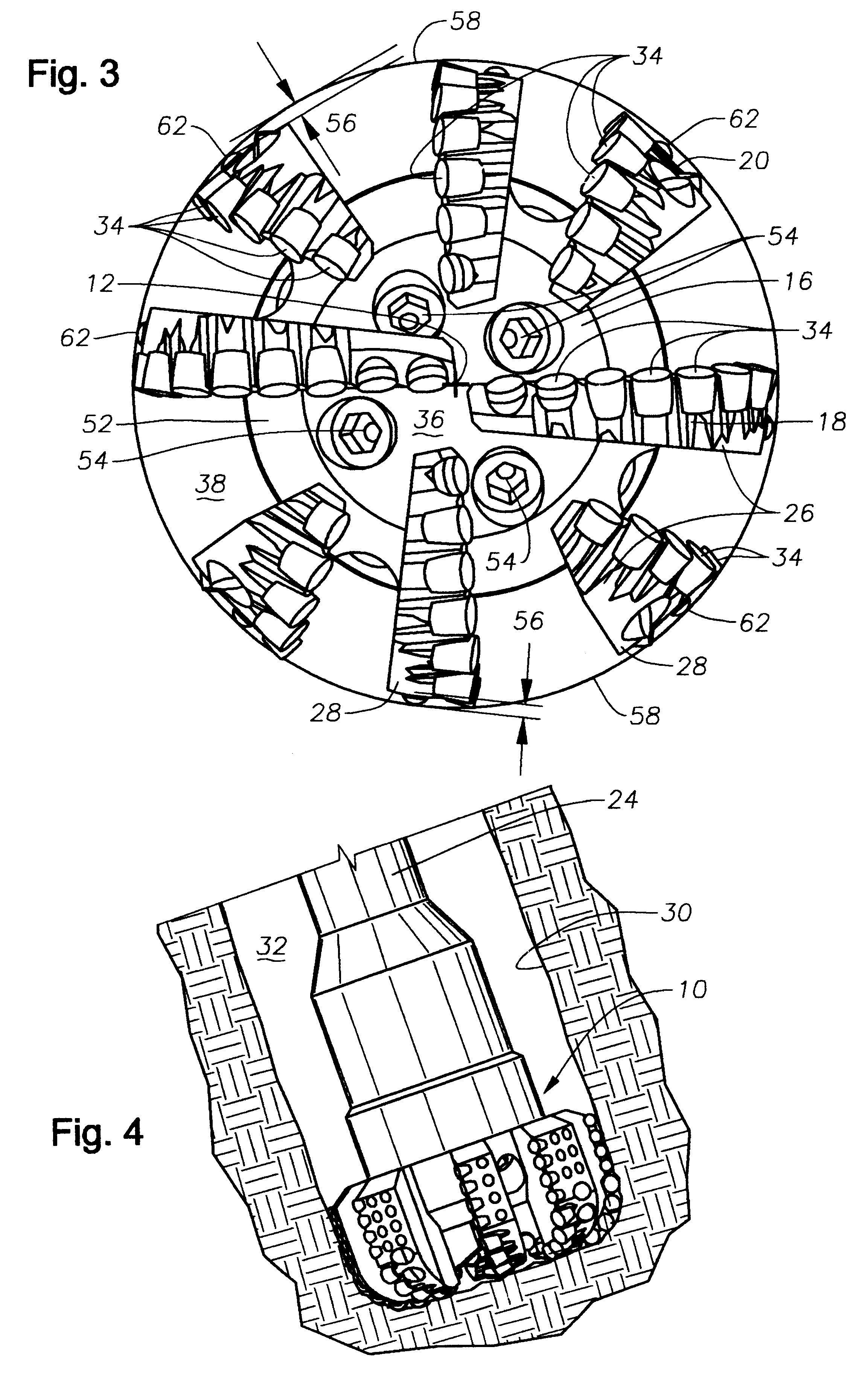Active gauge cutting structure for earth boring drill bits
a cutting structure and active gauge technology, applied in the field of drill bits, can solve the problems of reducing directional control, affecting cutting accuracy, and increasing constrain
- Summary
- Abstract
- Description
- Claims
- Application Information
AI Technical Summary
Problems solved by technology
Method used
Image
Examples
Embodiment Construction
Turning now to the drawing FIGS. 1 through 4, a fixed cutter drill bit of the present invention is illustrated and generally designated by the reference numeral 10. The drill bit 10 has a central axis of rotation 12 and a bit body 14 having a leading face 16, an end face 18, a gauge region 20, and a shank 22 for connection to a drill string 24. A plurality of blades 26 are upstanding from the leading face 16 of the bit body and extend outwardly away from the central axis of rotation 12 of the bit 10. Each blade 26 terminates in a gauge pad 28 which faces a wall 30 of the borehole 32.
A number of cutters 34 are mounted on the blades 26 at the end face 18 of the bit 10 in both the cone region 36 and the shoulder region 38 of the end face 18. Another group of cutters 34 are mounted on the gauge pads 28.
As shown in FIG. 6, each of the cutters 34 partially protrude from their respective blade 26 and are spaced apart along the blade 26, typically in a given manner to produce a particular t...
PUM
 Login to View More
Login to View More Abstract
Description
Claims
Application Information
 Login to View More
Login to View More - R&D
- Intellectual Property
- Life Sciences
- Materials
- Tech Scout
- Unparalleled Data Quality
- Higher Quality Content
- 60% Fewer Hallucinations
Browse by: Latest US Patents, China's latest patents, Technical Efficacy Thesaurus, Application Domain, Technology Topic, Popular Technical Reports.
© 2025 PatSnap. All rights reserved.Legal|Privacy policy|Modern Slavery Act Transparency Statement|Sitemap|About US| Contact US: help@patsnap.com



